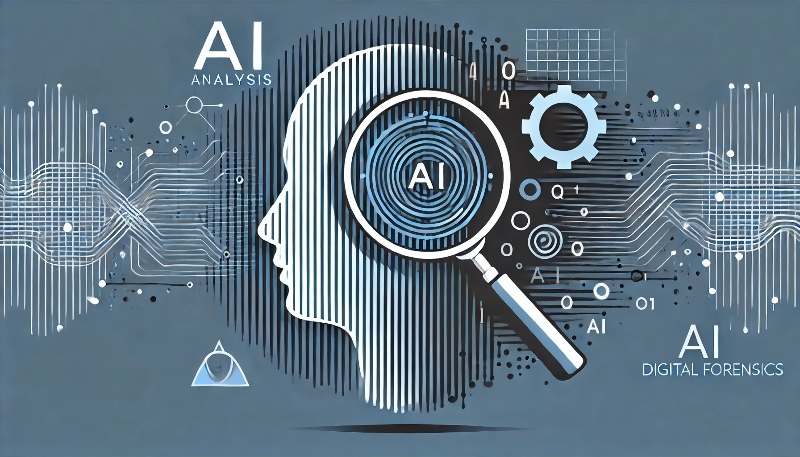AI-Driven Digital Forensics: Market Trends, Technologies, Competition, and Recent Developments
As cybercrime becomes more sophisticated, traditional forensic methods struggle to keep up with the increasing volume and complexity of digital evidence. AI-driven digital forensics is revolutionizing the way investigators collect, analyze, and interpret data in the aftermath of cyber incidents. By harnessing the power of artificial intelligence (AI) and machine learning (ML), digital forensics tools can now automate the analysis of large datasets, detect anomalies faster, and identify hidden patterns that would otherwise go unnoticed. In this blog, we explore the market trends, technologies driving AI-driven digital forensics, the competitive landscape, and the latest developments in the industry.
Market Overview
The global AI-driven digital forensics market is experiencing rapid growth, driven by the increasing frequency of cyberattacks, digital fraud, and the need for more efficient and scalable forensic solutions. The market is projected to grow at a CAGR of 24.7% between 2024 and 2031, with a valuation expected to exceed $17.7 billion by the end of the decade.
Enterprises across various sectors, including finance, healthcare, government, and law enforcement, are adopting AI-driven forensic tools to improve their cybersecurity response, enhance investigative efficiency, and mitigate financial losses. The rise of cloud computing, IoT devices, and mobile technology has further increased the demand for AI-powered forensic solutions capable of managing large and diverse data sets.
Key Technologies Behind AI-Driven Digital Forensics
- Machine Learning (ML) Algorithms: AI-driven digital forensics platforms rely on machine learning to sift through vast amounts of data, identifying trends and anomalies that indicate malicious activity. These algorithms learn from historical data to improve the accuracy and speed of investigations, allowing forensic teams to uncover hidden connections and evidence with minimal manual intervention.
- Natural Language Processing (NLP): NLP is used to analyze unstructured data, such as emails, documents, chat logs, and social media posts, helping investigators find relevant information faster. By processing language-based data, NLP can detect keywords, sentiment, and potential threats, providing deeper insights into the context of cyber incidents.
- Automated Evidence Collection: AI-driven tools automate the process of collecting and preserving digital evidence across multiple devices and platforms. This technology allows forensic teams to securely gather data from computers, smartphones, cloud systems, and IoT devices without compromising the integrity of the evidence.
- Anomaly Detection: AI-powered forensic platforms use advanced anomaly detection algorithms to flag suspicious activities, such as unauthorized access, data manipulation, or system breaches. By analyzing user behavior, network traffic, and file integrity, AI-driven solutions can identify irregularities and potential threats in real-time.
- Image and Video Analysis: In cases where digital forensics involves multimedia content, AI can help speed up the analysis of images and videos. AI-driven image recognition and facial recognition technologies enable investigators to extract valuable information from large volumes of visual data, enhancing their ability to identify suspects, reconstruct events, and validate evidence.
Competitive Landscape
The AI-driven digital forensics market is highly competitive, with several key players offering innovative solutions to meet the growing demand. Major companies leading the charge include IBM Corporation, Cellebrite, Magnet Forensics, Guidance Software, and FireEye. These companies provide cutting-edge AI-powered tools designed to streamline the forensic process, from data collection to analysis and reporting.
- IBM Corporation offers its IBM i2 Analyze platform, which integrates AI to help organizations analyze and visualize large datasets. This platform is widely used by law enforcement agencies and cybersecurity teams to detect cyber threats and analyze connections between different data points.
- Cellebrite is a market leader in mobile device forensics, providing AI-driven solutions that enable investigators to extract and analyze data from smartphones, tablets, and other portable devices. Cellebrite's tools are widely used by law enforcement agencies for criminal investigations, digital evidence gathering, and cyber incident response.
- Magnet Forensics specializes in AI-powered digital forensics for law enforcement, military, and corporate sectors. Their platform uses machine learning to automate the analysis of digital evidence, improving the efficiency of cyber investigations.
- Guidance Software (a subsidiary of OpenText) offers EnCase Forensics, a comprehensive AI-driven forensic solution designed for collecting, analyzing, and preserving digital evidence across multiple environments. EnCase is widely used by law enforcement and corporate investigators to address a broad range of cybercrime cases.
- FireEye provides AI-driven cybersecurity solutions that include forensic capabilities, helping organizations investigate data breaches and cyberattacks. FireEye’s platform integrates machine learning to detect, analyze, and respond to cyber threats in real-time.
Recent Developments in AI-Driven Digital Forensics
- IBM recently enhanced its i2 Analyze platform by integrating more advanced AI capabilities, allowing forensic teams to analyze unstructured data, detect anomalies, and visualize connections faster and more accurately.
- Cellebrite launched a new AI-powered tool for analyzing encrypted mobile device data. This new solution helps investigators unlock and extract data from encrypted devices, enhancing their ability to retrieve crucial digital evidence in criminal cases.
- Magnet Forensics introduced a cloud-based digital forensics platform that allows investigators to analyze data from cloud storage systems, social media accounts, and remote devices. The platform uses AI to automate evidence collection and analysis across cloud environments.
- FireEye recently expanded its AI-driven forensics capabilities by integrating advanced machine learning models that improve anomaly detection and accelerate breach investigations.
Conclusion
AI-driven digital forensics is reshaping the future of cybersecurity and investigative practices by automating complex processes, improving detection accuracy, and speeding up investigations. As cyberattacks continue to rise in frequency and sophistication, AI-powered forensic solutions will become increasingly essential in identifying threats, securing digital evidence, and bringing cybercriminals to justice. With rapid advancements in AI and machine learning, the future of digital forensics holds immense promise for enhancing global cybersecurity.
